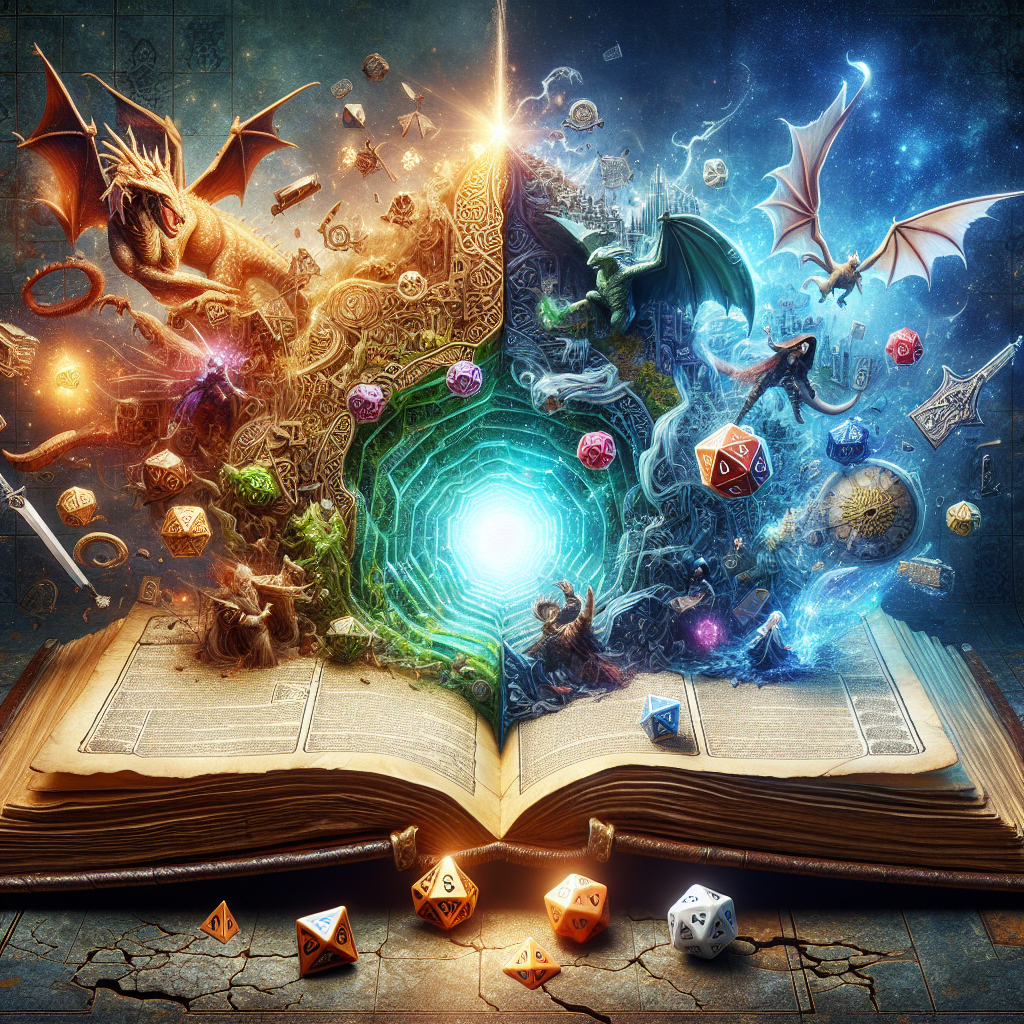The Art of Storytelling: How Dungeons and Dragons Board Games Enhance Role-Playing
Storytelling has long been an intrinsic part of human culture, a way to share experiences, morals, and imagination. In recent years, the resurgence of tabletop role-playing games (TTRPGs), particularly Dungeons & Dragons (D&D), has shown that the art of storytelling is alive and well, captivating participants of all ages. D&D is more than just a game; it is an experience that fosters creativity, collaboration, and—most importantly—storytelling. The unique mechanics of D&D board games create opportunities for in-depth role-playing that elevate the stories players weave into existence.
The Core of Storytelling in D&D
At its essence, Dungeons & Dragons is a storytelling engine that thrives on collaboration. Unlike traditional board games that may focus on competition or strategy, D&D invites players to become co-authors in a shared narrative. While the Dungeon Master (DM) acts as the facilitator of the story, directing the narrative flow and controlling the world, the players breathe life into their characters and make choices that can turn the tide of the tale.
Character Creation: The First Step in Storytelling
Character creation is a fundamental element of D&D that contributes significantly to its storytelling potential. Players craft distinctive, multi-dimensional characters with unique backgrounds, goals, and motivations. This process is akin to penning an origin story. As players explore their characters’ histories, they set the stage for rich character arcs and emotional journeys. The fusion of personal stakes and the overarching narrative creates an immersive experience, allowing players to engage with the story personally and meaningfully.
Collaborative World-Building
One of the most compelling aspects of D&D is the relationship between players and the world they inhabit. The DM creates a framework—geography, lore, and cultures—that sets the stage for adventure. However, players contribute their interpretations of the world through their characters’ experiences and interactions. This fluid exchange not only enriches the game but enhances the storytelling aspect. By allowing players to shape their environments and influence outcomes, D&D fosters a sense of agency and investment in the narrative.
Moreover, players can introduce characters, rumors, or personal quests, expanding the narrative universe organically, making the world feel alive and responsive.
The Power of Improv and Shared Narrative
Role-playing in D&D heavily employs improvisation, encouraging spontaneity and creativity. The DM may prepare encounters and plot points, but players frequently veer off in unexpected directions, creating serendipitous storytelling moments. The ability to improvise dialogue and actions can lead to some of the most memorable scenes in a campaign, providing players with opportunities to explore their characters more profoundly.
Shared narrative techniques, such as “Yes, And…”—a pillar of improv—allow players to build upon each other’s ideas, creating collective storytelling. This interactivity elevates the experience beyond a simple game; it transforms it into a living narrative tapestry filled with intricate plots, surprising twists, and emotional depth.
The Mechanics of Role-Playing
While storytelling in D&D thrives on creativity, the mechanics of the game support and enhance this narrative endeavor. Dice rolls introduce elements of chance and suspense, making the outcome of decisions unpredictable. Conflict resolution mechanics, such as skill checks and combat systems, lend structure to improvisational storytelling, allowing players and the DM to navigate challenges in a structured way.
Additionally, the various rulebooks—filled with spells, monsters, and lore—offer endless inspiration for innovative storytelling. A DM may use materials to craft cohesive narratives that intertwine characters and campaign arcs. The balance of structure and freedom creates a fertile ground for storytelling where players are empowered to explore their creativity.
Immersive Experience Through Attendance
Many D&D campaigns unfold over multiple sessions, allowing for long-term character development and story progression. This ongoing narrative provides players with opportunities to dive deep into their characters’ psyches, evolving relationships and motives as the story unfolds.
D&D games can also incorporate visual aids, maps, and miniatures, enhancing immersion and helping players visualize the world they inhabit. Props, music, and thematic elements can further enhance the storytelling experience, drawing players deeper into the narrative.
Conclusion
The art of storytelling in Dungeons & Dragons board games is a harmonious blend of imagination, collaboration, and mechanics, creating a unique medium through which players can express creativity and explore their characters’ journeys. As participants compose their narratives together, they not only engage in a game but also forge friendships, shared memories, and a deeper appreciation for storytelling.
In a world where our stories are increasingly told through screens and pixels, the resurgence of tabletop role-playing games reminds us of the power of face-to-face interaction and collective storytelling. So, gather your dice, invite your friends, and embark on a thrilling adventure—because in Dungeons & Dragons, you’re not just playing a game; you’re crafting a story that’s uniquely your own.




